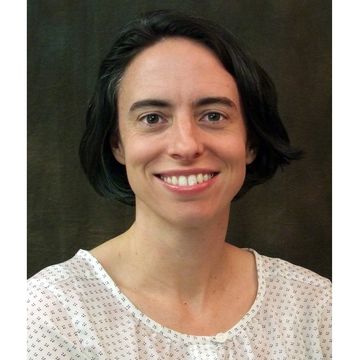
Dr. Joanna Fair: UNM Medical Residents Can Practice Anywhere
How much experience does that "new" doctor providing your check-up really have? Most people don't realize it, but medical students are still looking at another three to eight years of training after they receive their medical degree. Then there is the "make or break" board certification testing at the end of training. It can sound daunting, but The University Of New Mexico School of Medicine (SOM) has a vast support system for learners across multiple disciplines - all with the goal of turning that resident into a practicing New Mexico physician.
"Board certified" is not just an icing on the cake title for them - all physicians graduating from a residency or fellowship program have to pass their "boards."
"University of New Mexico Hospital requires all practicing physicians be board certified," says Joanna Fair, MD, PhD. Fair has served since 2018 as associate dean of Graduate Medical Education at SOM.
Fair, who laughingly calls herself a 'UNM Lifer' joined UNM as a radiology diagnostic resident in 2003 and joined the faculty in 2009. She has held a number of educational roles within the medical school, is on a state-wide task force for residency development in rural and underserved areas and is currently chair of the American Board of Nuclear Medicine, the nation's primary certifying organization for nuclear medicine.
From the local to national level, working to create training programs that are in-depth, relevant, and able to attract top-notch students is a complex endeavor, she adds.
Currently, there are 636 medical residents and fellows at UNM. These trainees serve as residents for between 3-7 years, with some of them adding an additional 1-3 year fellowship.
As chair of the American Board of Nuclear Medicine, Fair meets with others nationally to provide the framework for board certification for this specialty.
In her role as associate dean, her work is focused on residency and fellowship training for all medical graduates. Currently, there are 60 accredited medical residency and fellowship programs as well as one dental program and one medical physics program offered at UNM.
The American Council of Graduate Medical Education accredits each of the UNM medical residency and fellowship programs annually. In 2018-2019, UNM achieved new program accreditation from the ACGME in physical medicine and rehabilitation residency, addiction medicine, surgical oncology and vascular neurology (stroke) fellowships.
Those accreditations are crucial for the health of New Mexicans.
"It is well known that medical residents are much more likely to stay and practice where they trained," she says.
About a third of UNM residency and fellowship graduates remain to practice medicine in the state with 20 percent of those completing training at UNM stepping into academic jobs at the UNM Health Sciences campus or at the Veterans Administration Medical Center in Albuquerque.
"One of our missions is to provide excellent physicians for the State of New Mexico, and our residents and fellows can go anywhere," Fair says.
"As we continue to work with the state, we are hoping to expand resident training into communities across New Mexico so that we can support more physicians staying - and practicing - here."